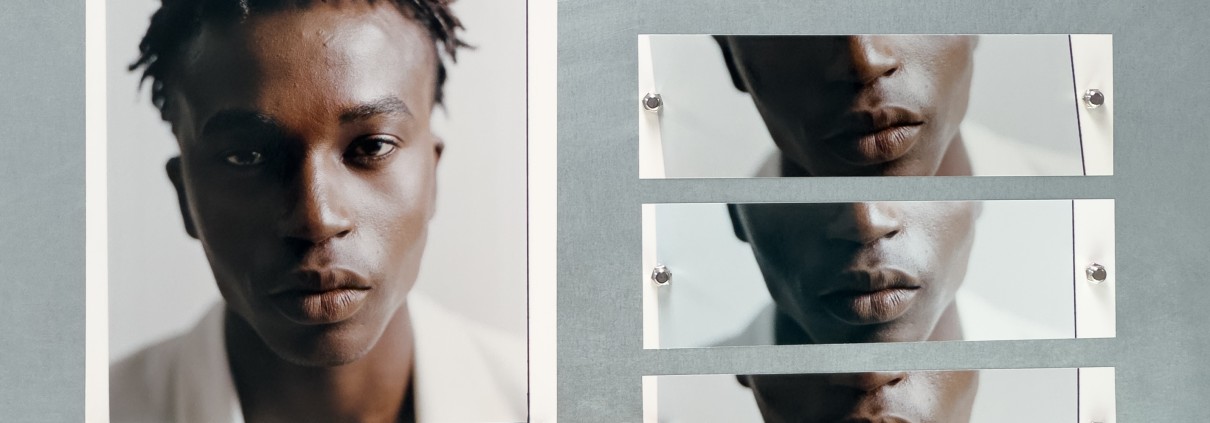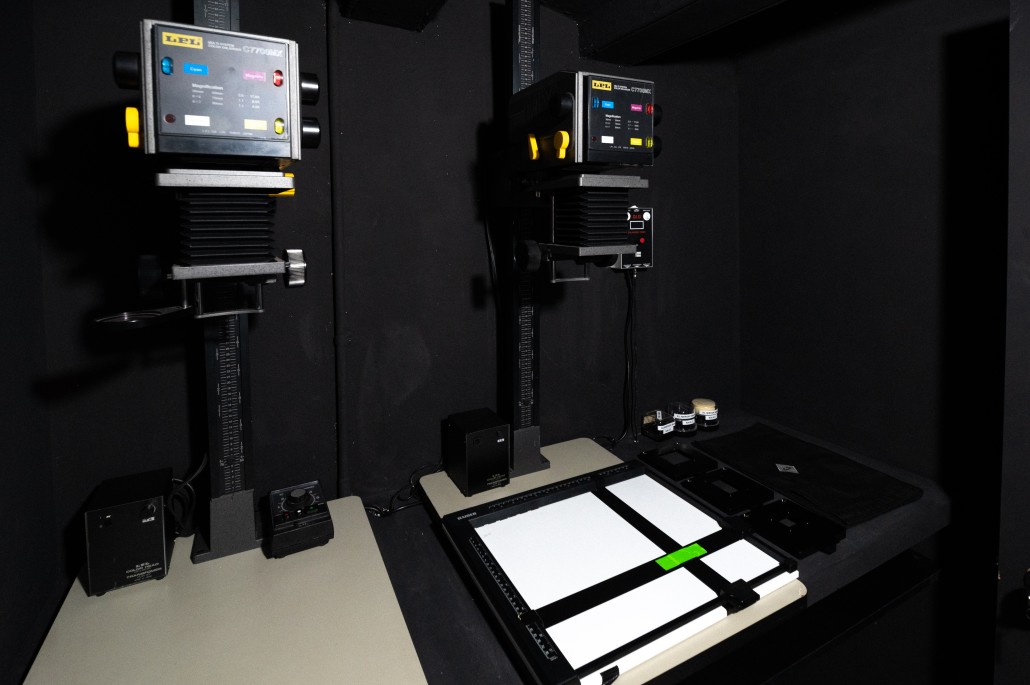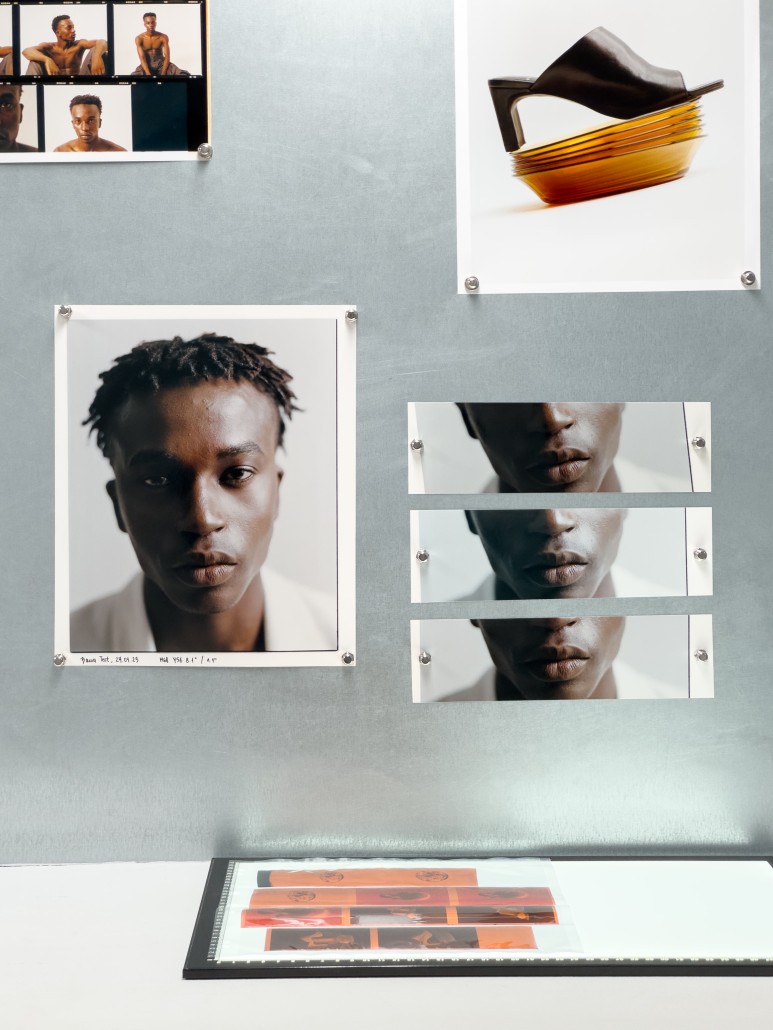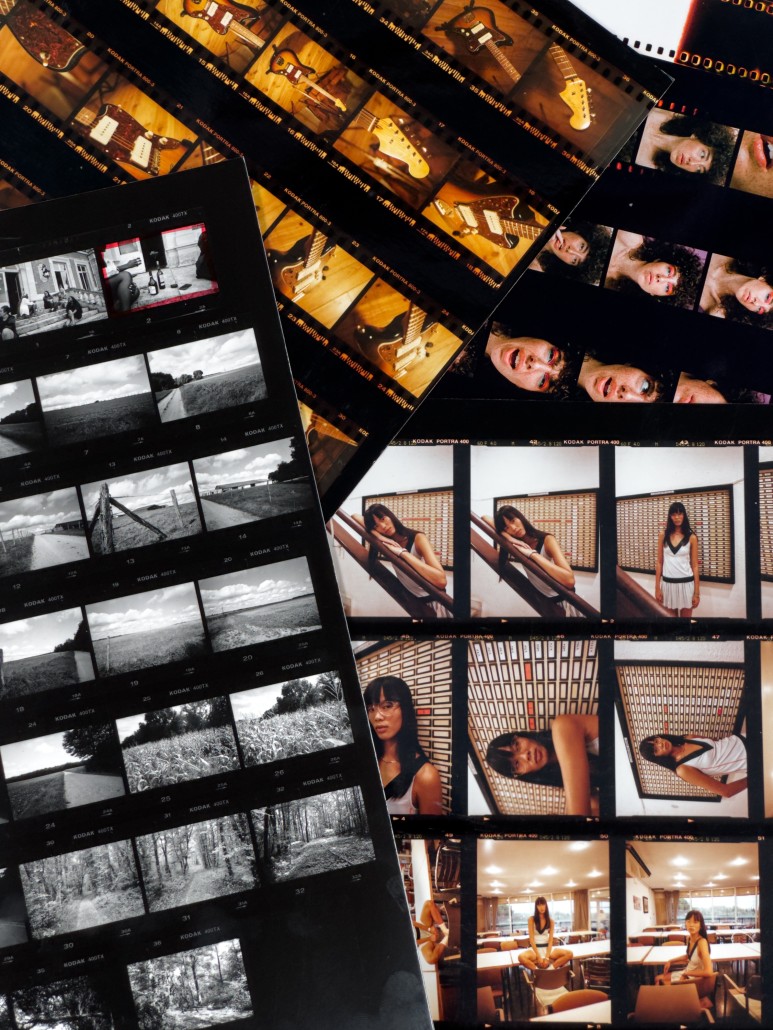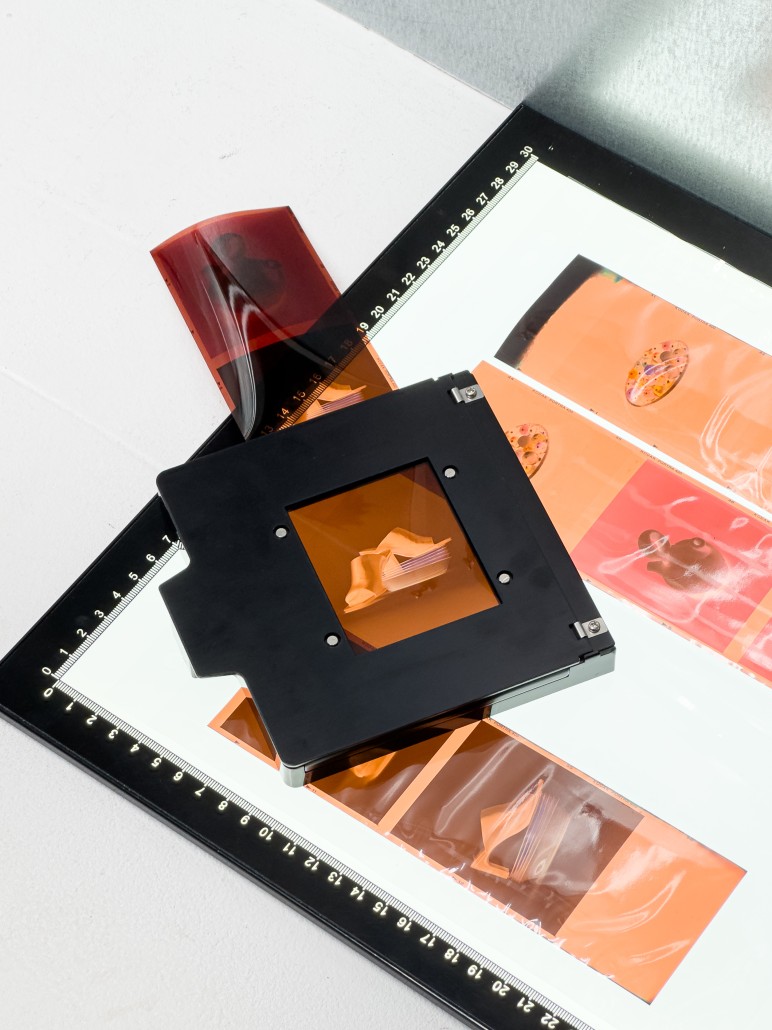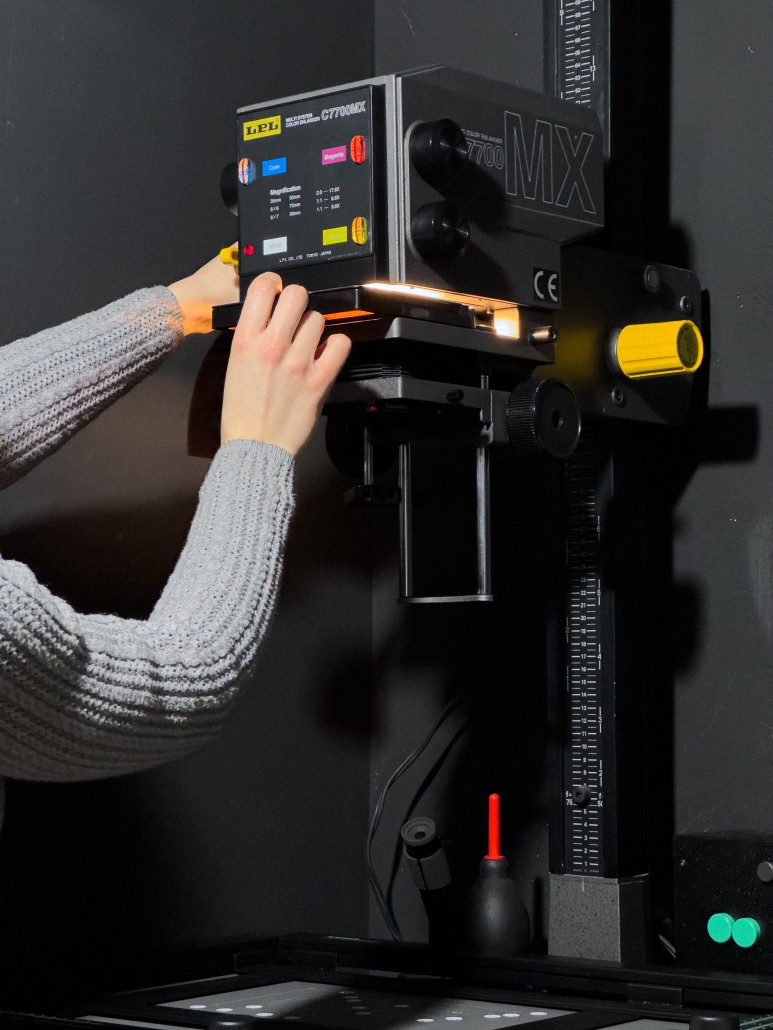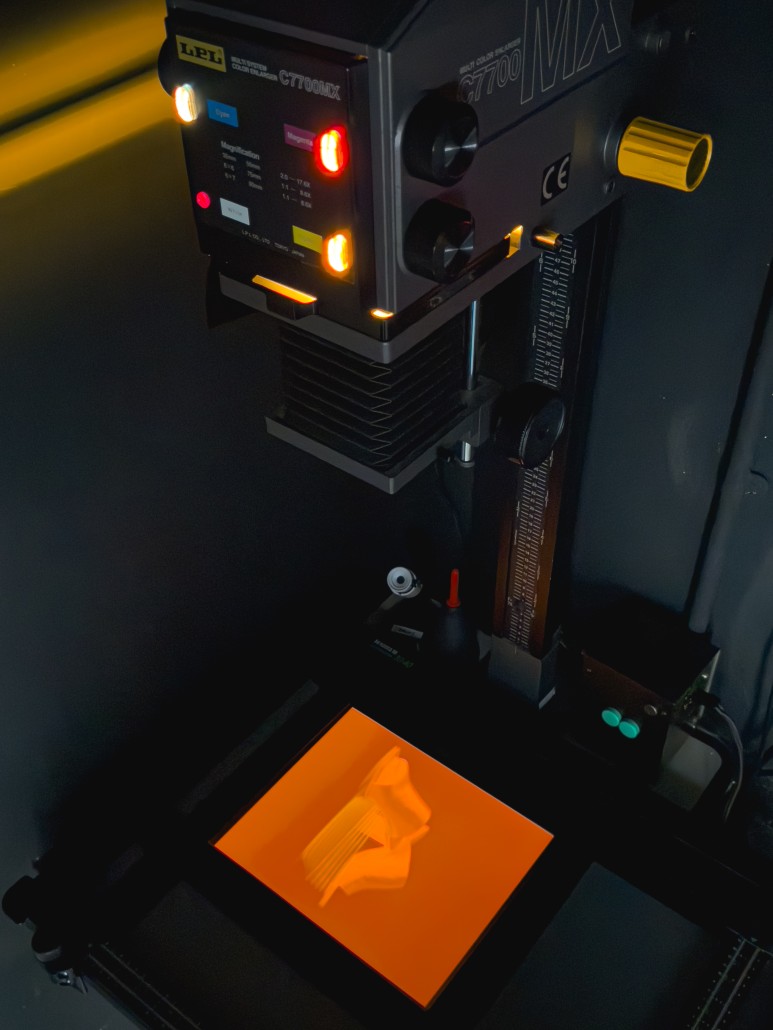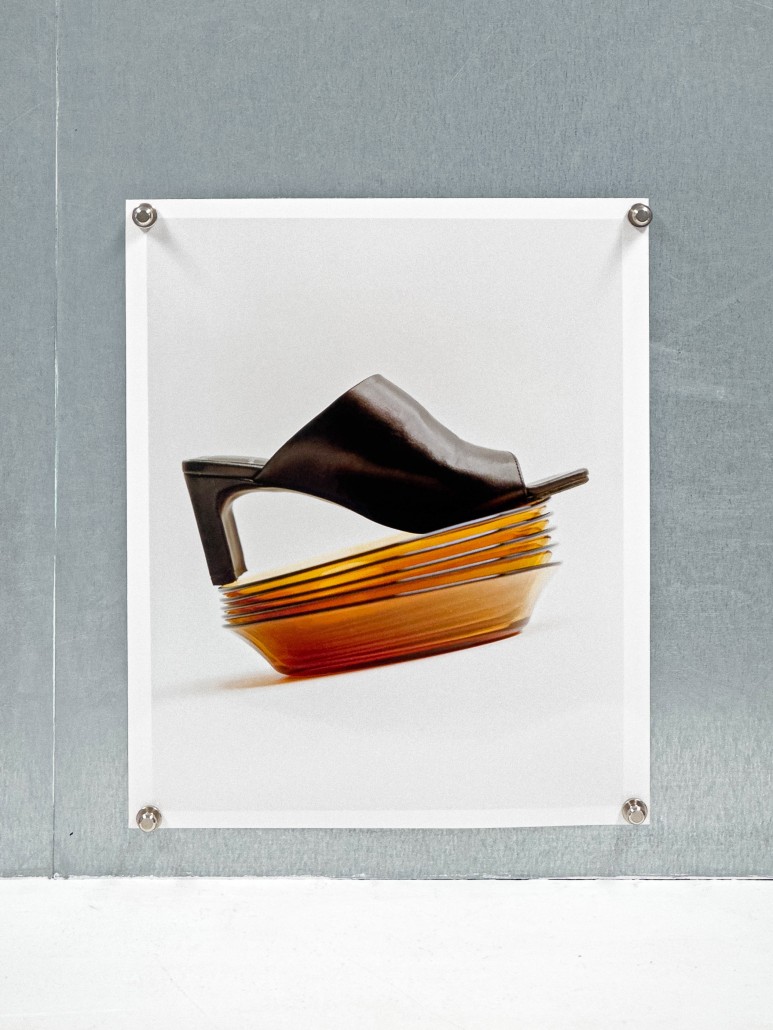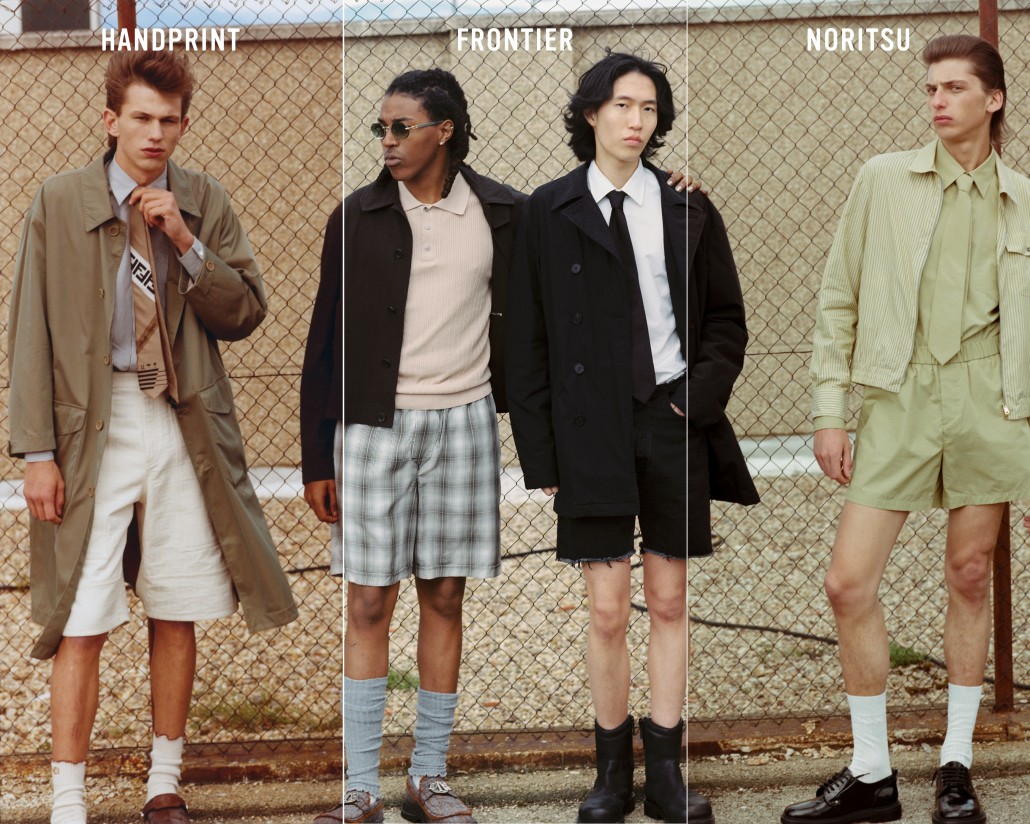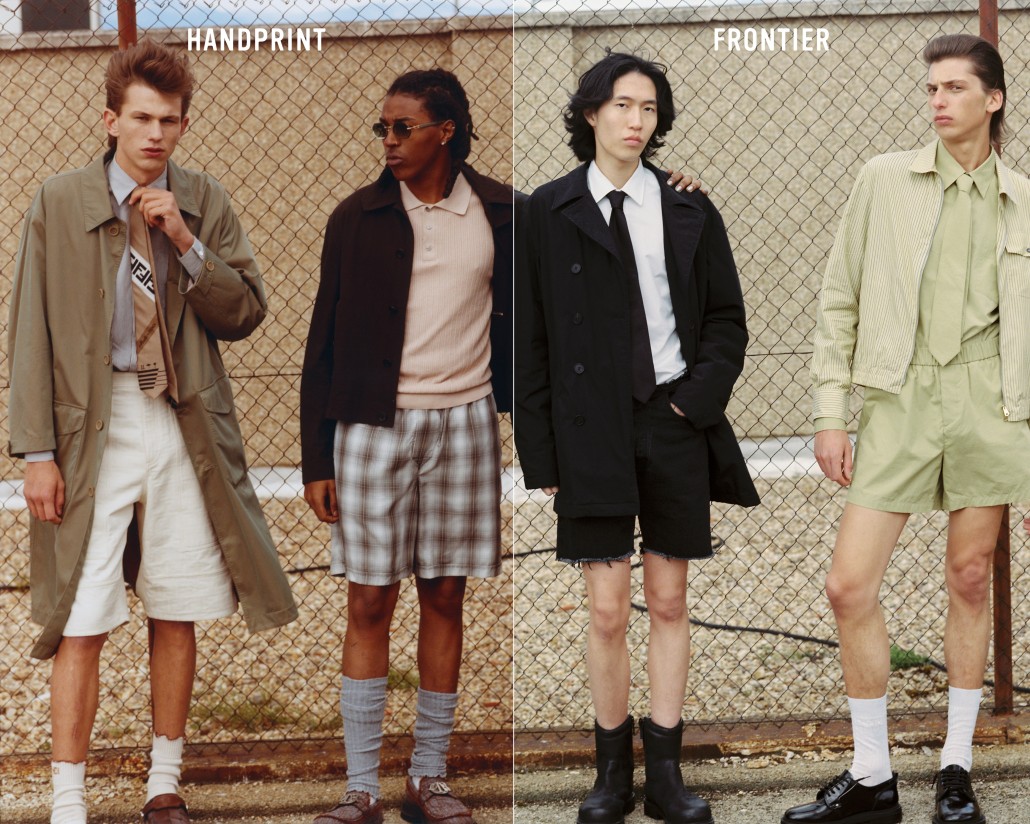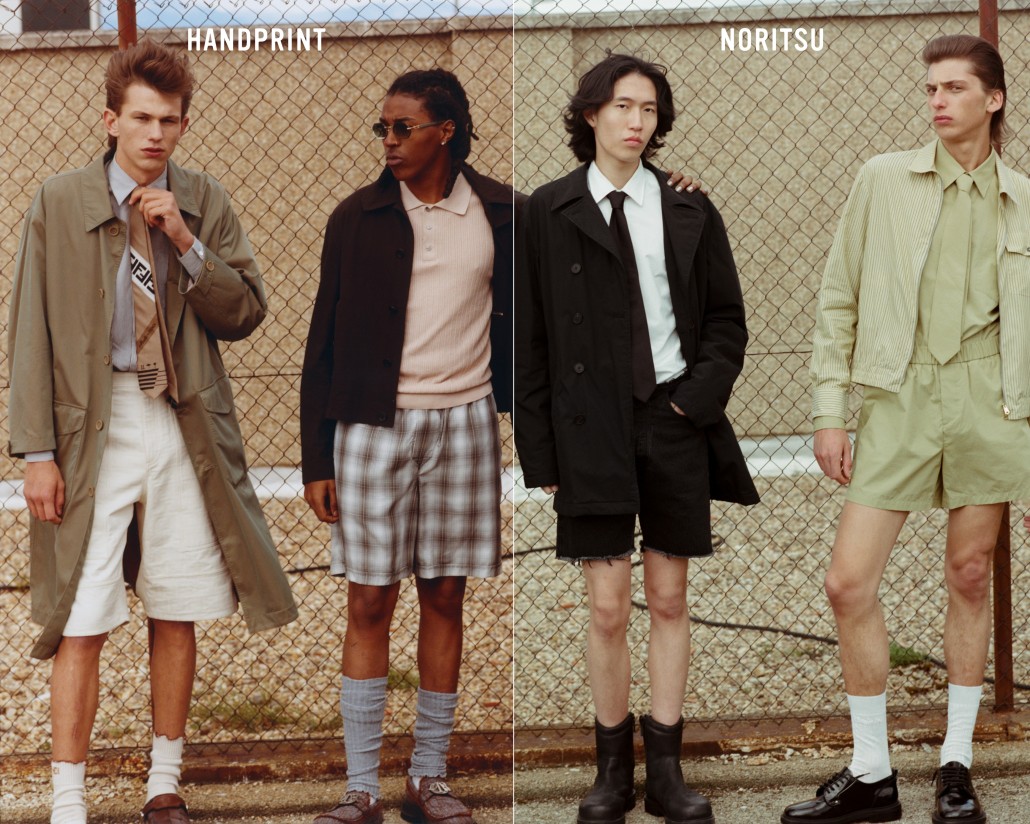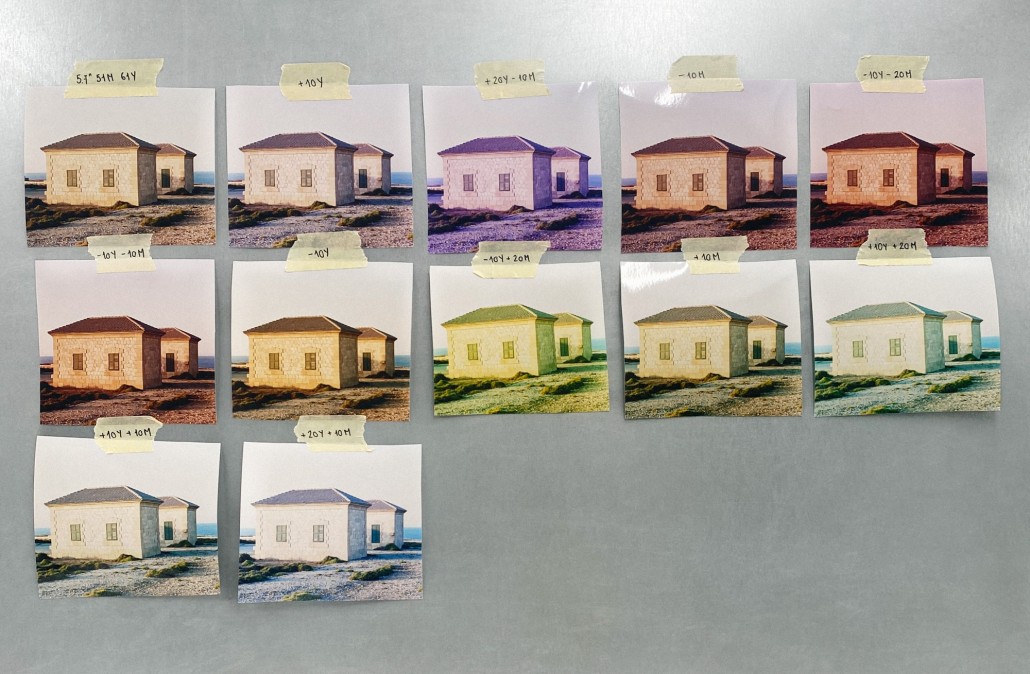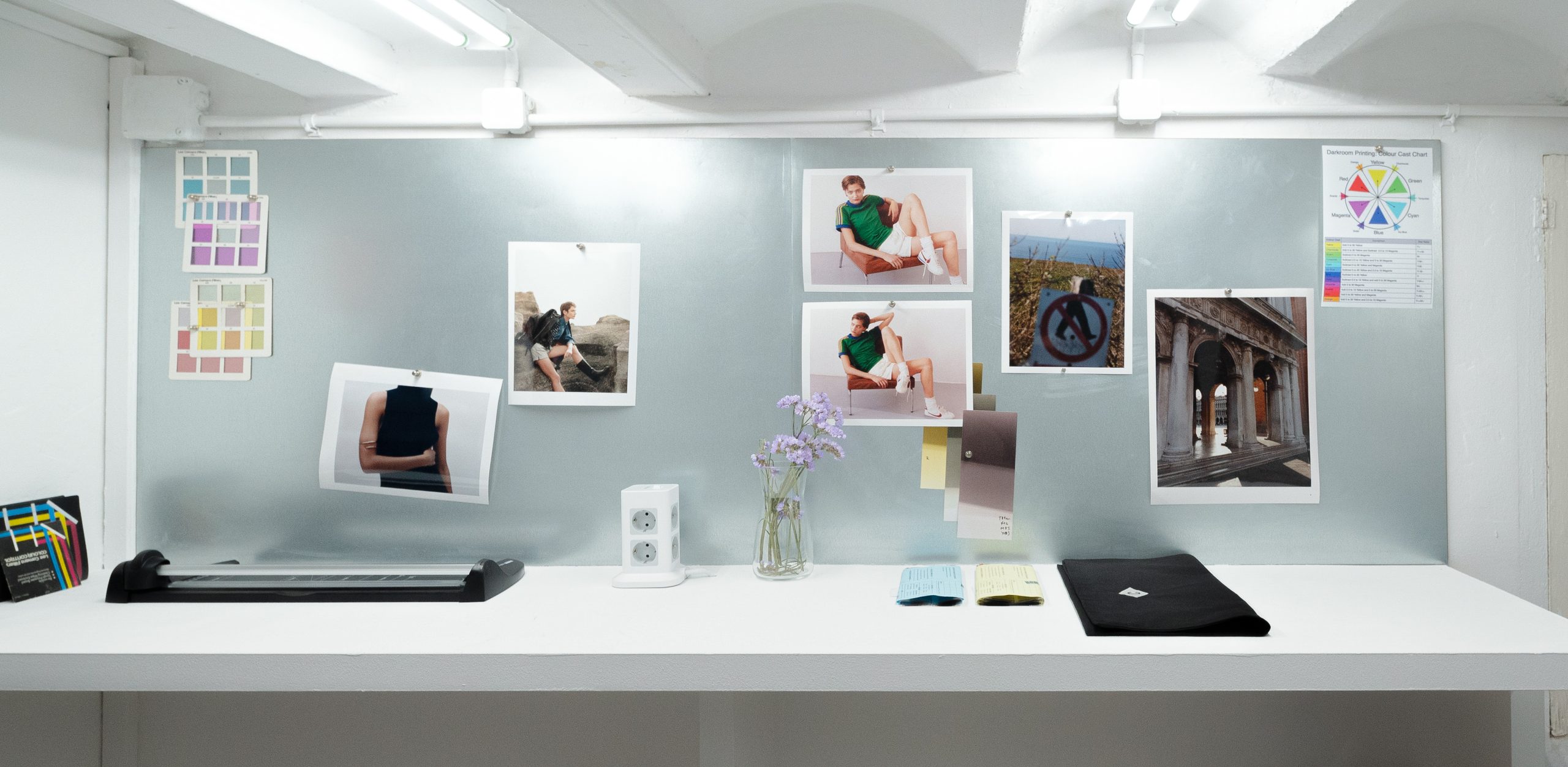Handprints: From the Negative to the Paper
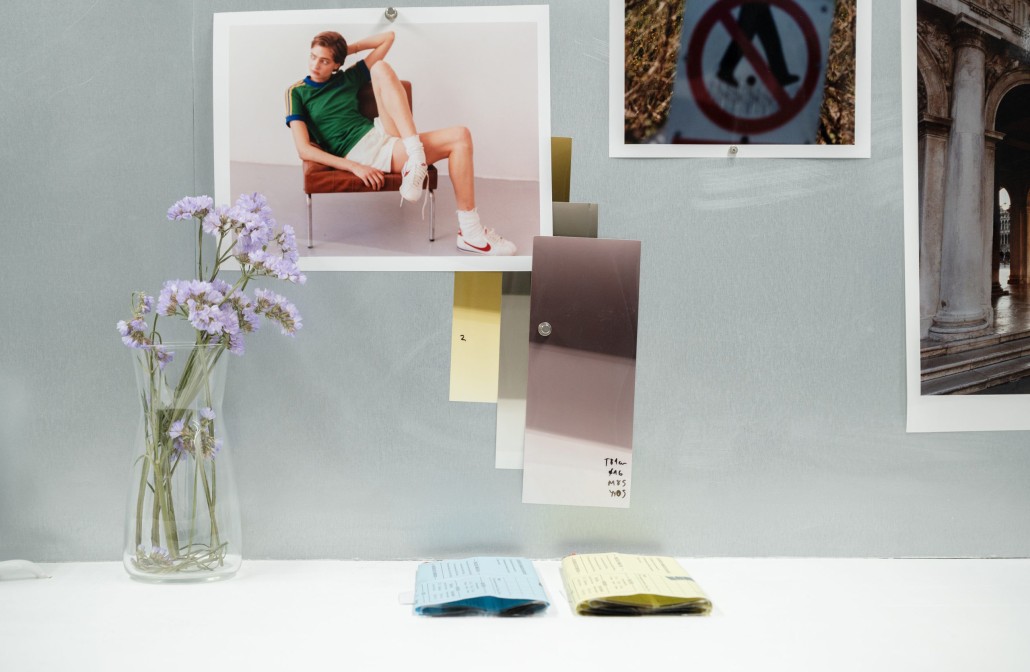
You’ve always thought your film photos were truly analog—but what if they could be even more so?
At Carmencita, we handle thousands of negatives daily, and it’s thrilling to see them turn into scans, prints, or even your next profile picture. But let’s face it: what we see today in the analog world isn’t purely analog—it’s been digitized.
FROM FILM TO PRINT, NOTHING IN BETWEEN
That’s where handprints come in. Driven by this craft that we thought to be dead, and inspired by photographers mastering color prints straight from negatives in the darkroom, we embarked on a challenging journey—to learn the craft ourselves, listen to those who had the knowledge and hopefully master it so that we can offer it to photographers like you, all over the world.
It was no picnic, it meant rethinking everything we know about color, the nature of the emulsions and how the color is created on paper through the RA4 process.
No scans. No shortcuts.
SO, WHAT IS A HANDPRINT?
Handprints have become a well-kept secret in the analog world, but chances are you’ve already seen them online, in magazine covers, or billboards, without being able to pinpoint why they have “a special feeling” to them.
We honestly could have never imagined that being commercially viable. It was a laborious, time-consuming process of learning from scratch, print after print, re-understanding the color in the darkroom, from negative to paper, nothing else.
The result? A whole new perspective on what film photography can achieve. Handprints have captured our hearts, and this post is dedicated to sharing why we think they’ll capture yours too.
Be aware: once you learn what a handprint is, there’s no going back! Ready? Keep reading!
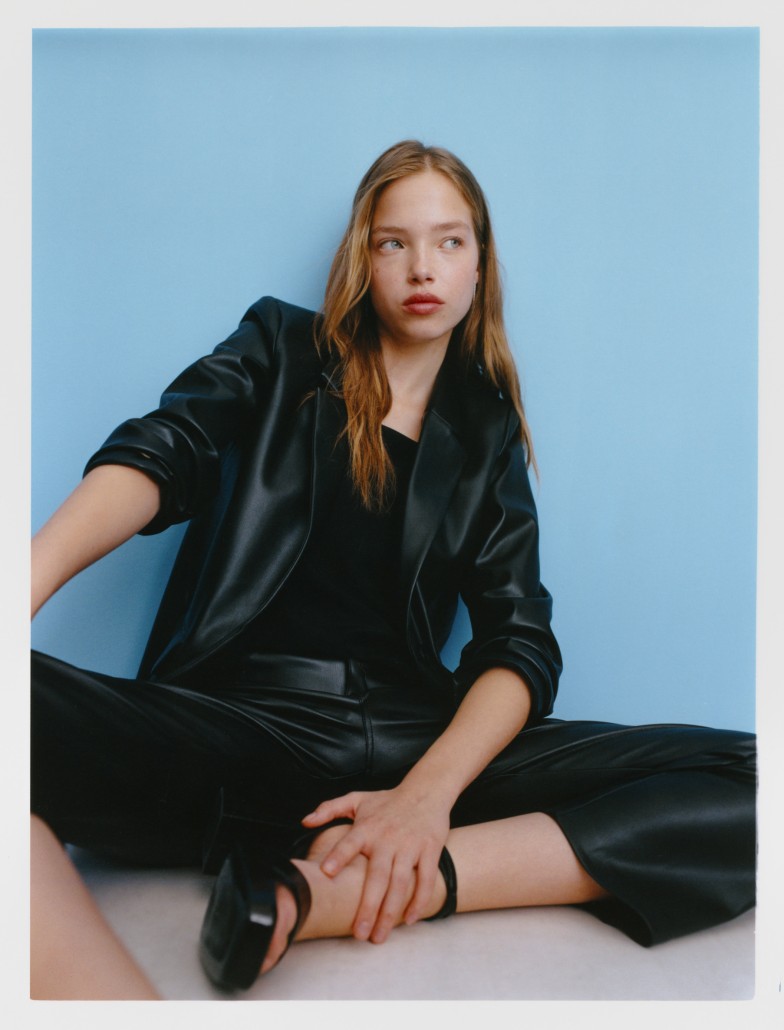
by Ernesto Sampons for Mango. Printed at the lab.
Handprints have been around since the mid-20th century and were the regular (and only) way of printing photos, initially in B&W and later in color. Remember the times when contact sheets were a must? That is because hand printing a whole roll of 36exp was (and still is) a mad idea. We can’t help but find the irony in thinking that the default method of understanding photography has fallen into secrecy in the last 20 years.
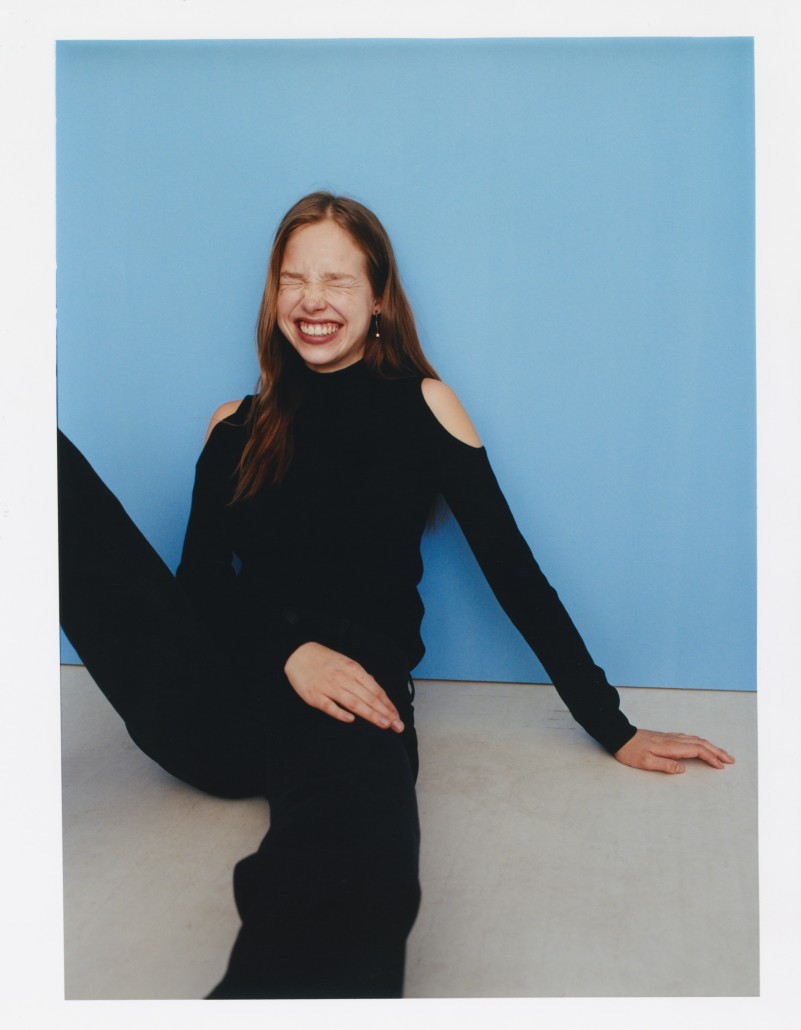
by Ernesto Sampons for Mango. Printed at the lab.
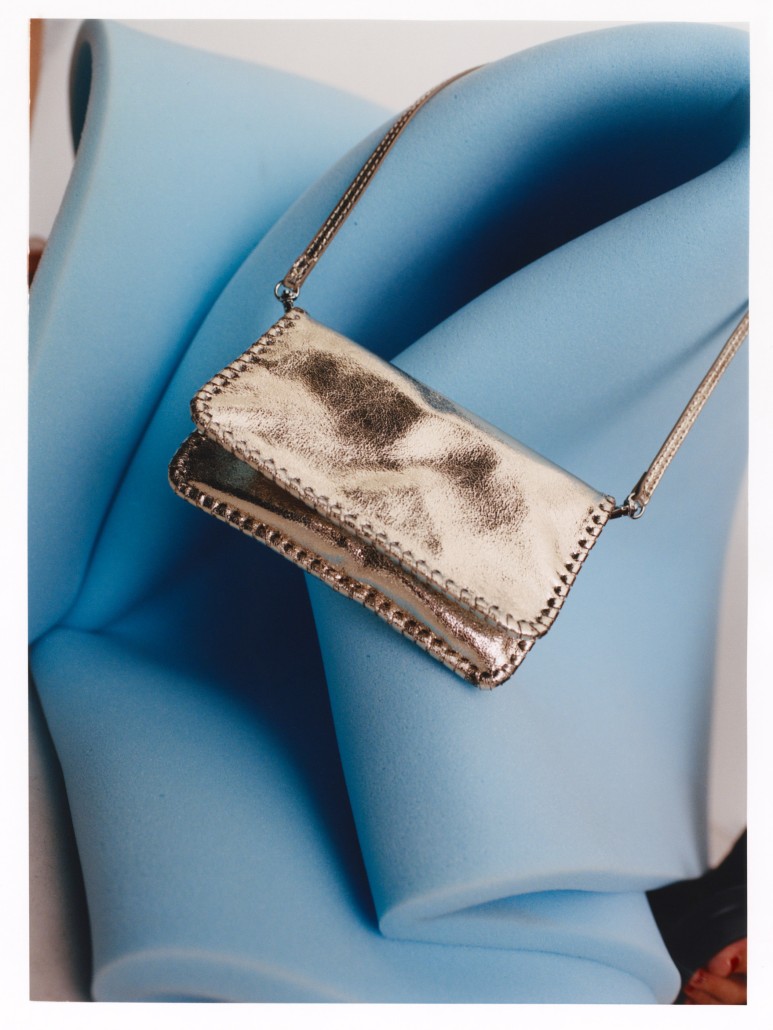
by Ernesto Sampons for Mango. Printed at the lab.
Simply put, a handprint is a photochemical copy made by hand, directly from the original negative, using a color enlarger, creating an image into a photographic paper. In a fully analog fashion, with no digital means involved.
In other words, true analog photography.
All our darkroom operations happen at Carmencita Barcelona where we have 3 darkrooms up for rent along with our trusty Colenta RA4 56 processor! We plan on hosting regular workshops and our schedule for renting.
Check out all the info about our darkroom here:
¿Do you want to learn how to print yourself?
HANDPRINTS VS. FILM SCANS
Scans are digital interpretations of a negative—quick, adjustable, and easy to share. While scanning ensures great color and efficiency, it may sometimes lack the depth and tactile feel of traditional prints.
At most labs, scanning is the standard and the files you receive from us—whether from Frontier or Noritsu—offer very different yet equally compelling results. Scanning offers the best quality-speed-price, the best solution for 95% of photographers. But if you belong to the 5% that seek something more, here is were true analog prints created in the dark come in!
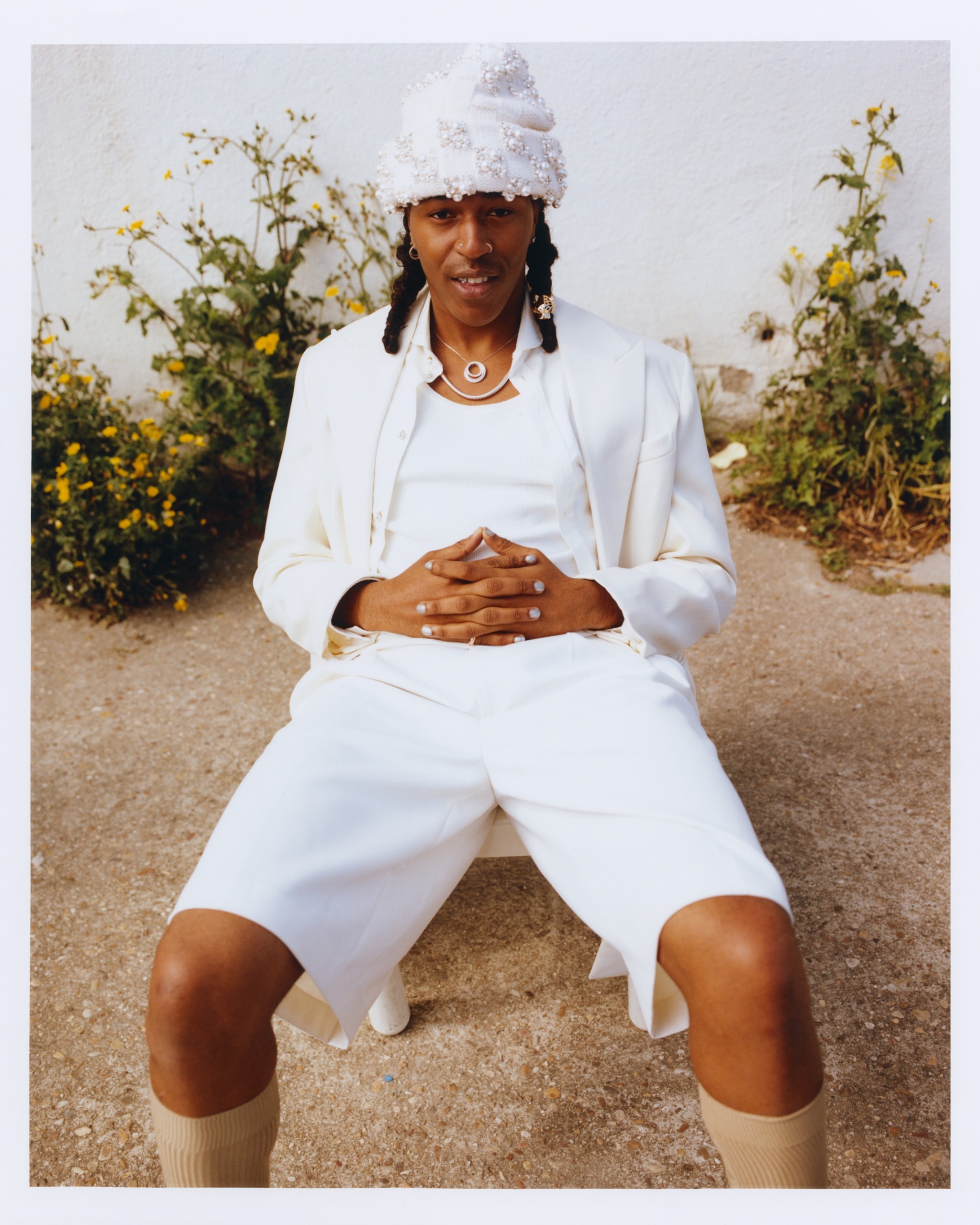
Handprint. Hedvig Jenning
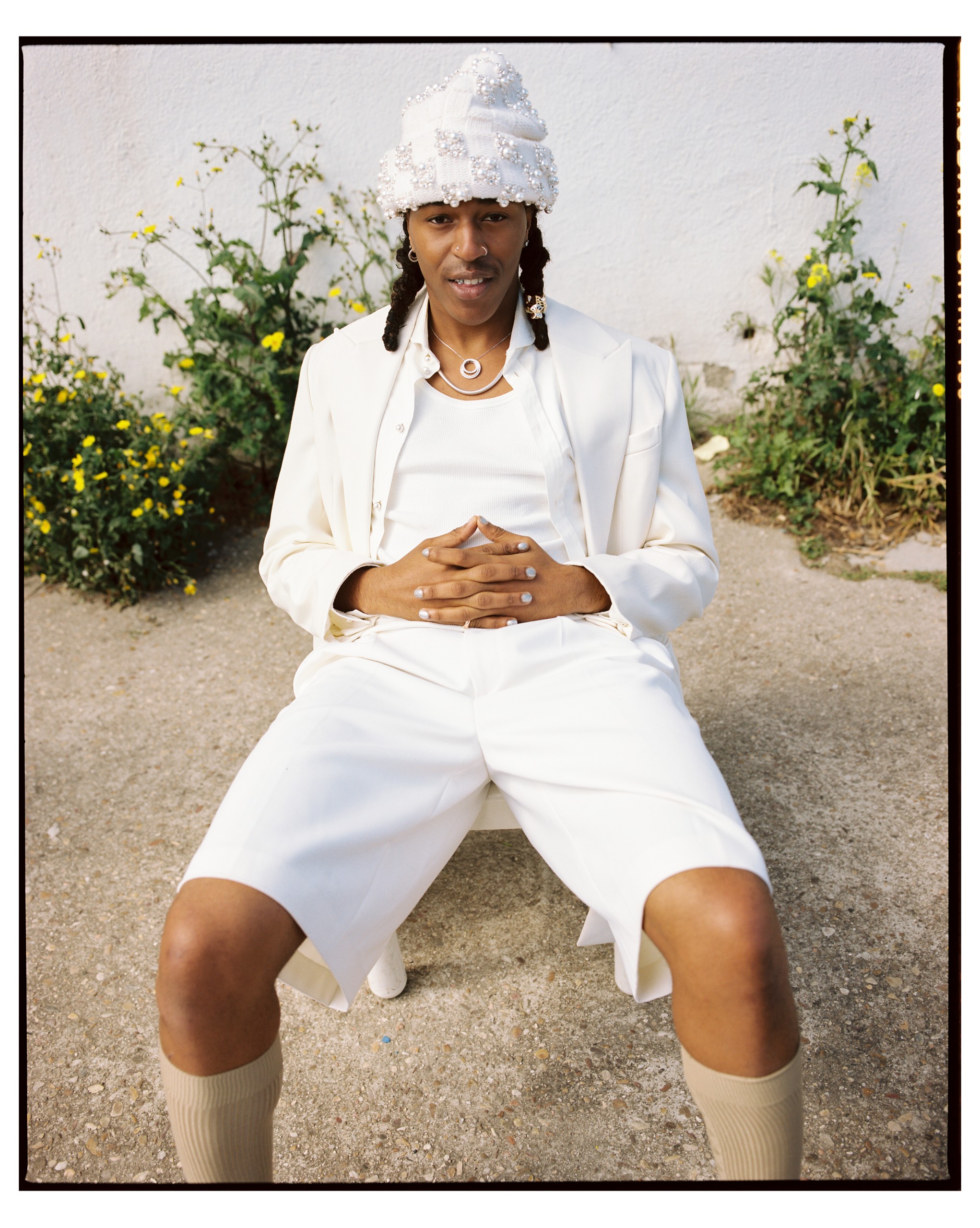
Frontier. Hedvig Jenning
Darkroom prints are made through a chemical process where the negative is exposed to light-sensitive paper, creating a physical print. This hands-on method results in unique qualities, rich tonal ranges, and subtle textural nuances, giving each print a distinctive character.
While scans offer the convenience of digital “immediacy” and flexibility to edit, darkroom prints are unique for their authenticity and the personality that comes from the traditional printing process.
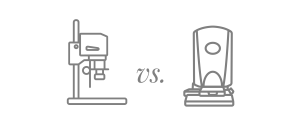
Many retouchers argue it’s possible to replicate the look of a handprint from a digital file, and while we do not question the existence of said dark sorcery, we believe it’s magic also relies in the journey, no only the end.
It’s about having an idea, sharing it with the printer or trying it for yourself; see what the paper is gonna bounce back to you on the first prints and if you are willing to fight against it or embrace it.
We have the privilege to work on an editorial shoot for Hedvig Jenning that involved outputting the images with both Frontier, Noritsu and Handprints! We believe it’s a great example to see the personality of each one.
*NOTE: Of course the color variations on each one could be endless, on the scans and on the handprints, but try to focus on the mood that each image offers.
Darkroom prints often possess a sense of profoundness and authenticity hard to replicate digitally, making each print a unique piece of work from the artist’s vision that has been produced at a certain time & date. Through these examples we can’t help to sense the scans feel a bit “colder” not only color-wise of course, but in the way the contrast, sharpness and blacks are rendered. The Noritsu is the one that gets “closer” to the handprint style but still doesn’t cut it.
Of course, you can also print scans on paper. However, it lacks the chemical miracle found only in handprints. You simply feel handprints differently.
It’s hard to describe through a digital screen, even the prints we are displaying in this post had to be scanned, but still, there is something different about them compared to the digital scan of the negative.
Perhaps the “depth” of the colours and tonalities.
Perhaps the scent of physicality invades us when we see these images.
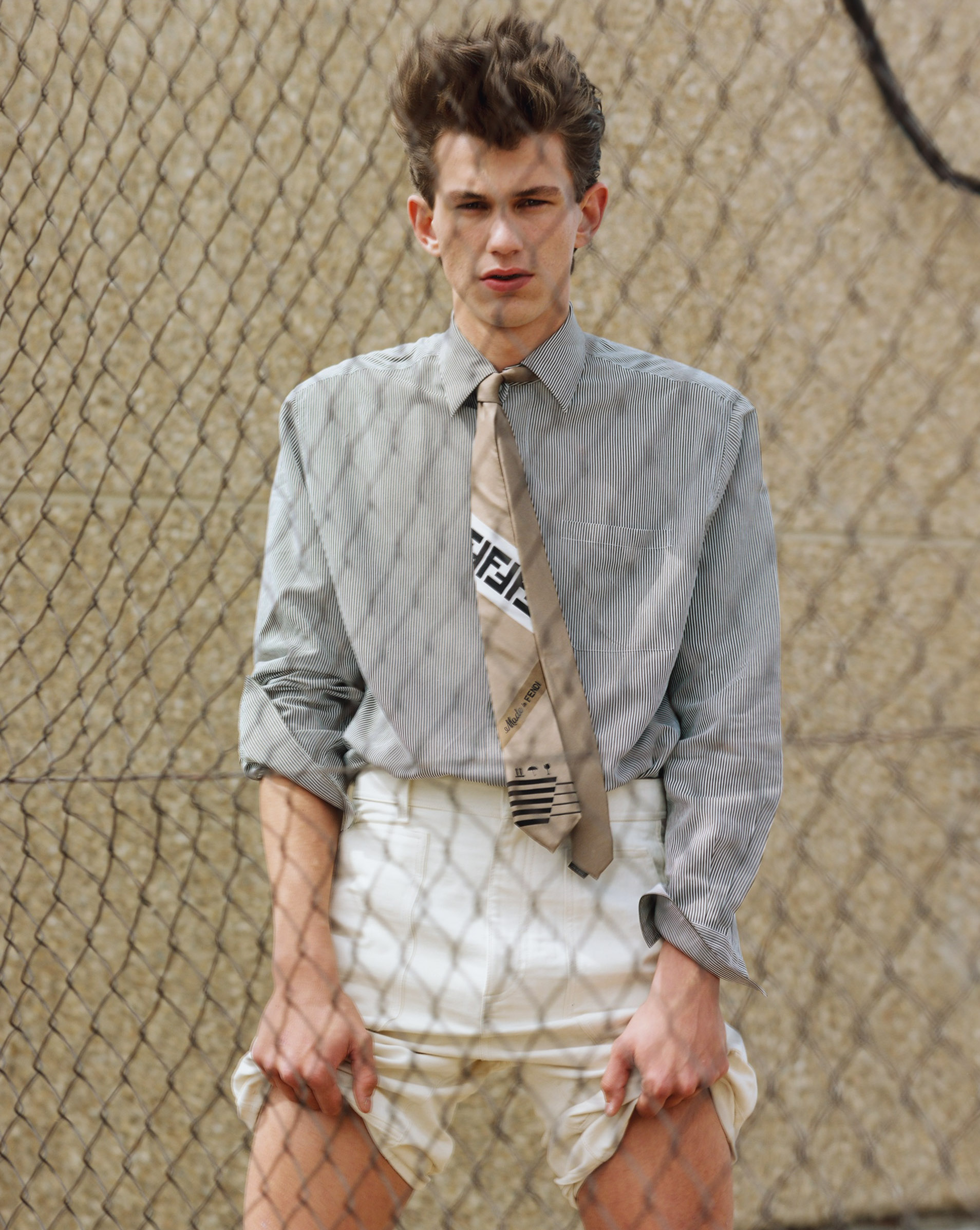

SAME PHILOSOPHY, DIFFERENT MEDIUM
Whether through scans or handprints, our aim as a lab is always to make the best out of every picture and try to meet the photographer’s expectations. For that, the images are adjusted during the scan and in post-production (by adding or subtracting values to/from cyan, magenta, yellow, and tweaking black channels).
The same goes for handprints
Nothing comes close to a handprint when you think of its value. It’s a traditional technique, the product of a lot of fine-tuning. It’s a much more than a manual process vs the scans, it’s perhaps the bridge between a craft and an industrial process.
CHOOSING YOUR PRINTS
“Which images should I print?” is an awfully common question today, it’s already hard to choose when it comes to digital prints, so darkroom prints are no exception.
If an image has a significant meaning for you, then it’s worth becoming a handprint.
If it’s an image that you feel can enhance its essence through a softer/human-like feeling, then it’s worth becoming a handprint.
Handprints offer the tangible qualities of film with unparalleled colour fidelity and detail.

OUR CONCLUSIONS
Darkroom prints are not only the work of one singular person; they are the result of a collaboration between the photographer and the printer. Your work comes out of your hands (& eyes!), and you’re entrusting someone else to help you complete the work you started, someone who is equally committed to your work, at least for those hours.
We believe that process can enhance your photography. Trust is key. The outcome might differ from what you exactly envisioned, and that does not need to be a bad thing. One of the greatest lessons we’ve learned over these years, analogue photography forces you to accept things might not always go the way you imagined, and that’s not a bad thing! This often adds dimensions to your images that we believe, you might never achieve on your own.
There’s nothing like the pleasure of working with someone you trust, we’ve been perfecting the craft of “trust” for the last 10 years with photographers from all over the globe when it comes to developing & scanning. And we believe we are now ready to take it to the darkroom.
Want to come to our darkroom?
/darkroom-prints
Check our IG:
@carmencitadarkroom

